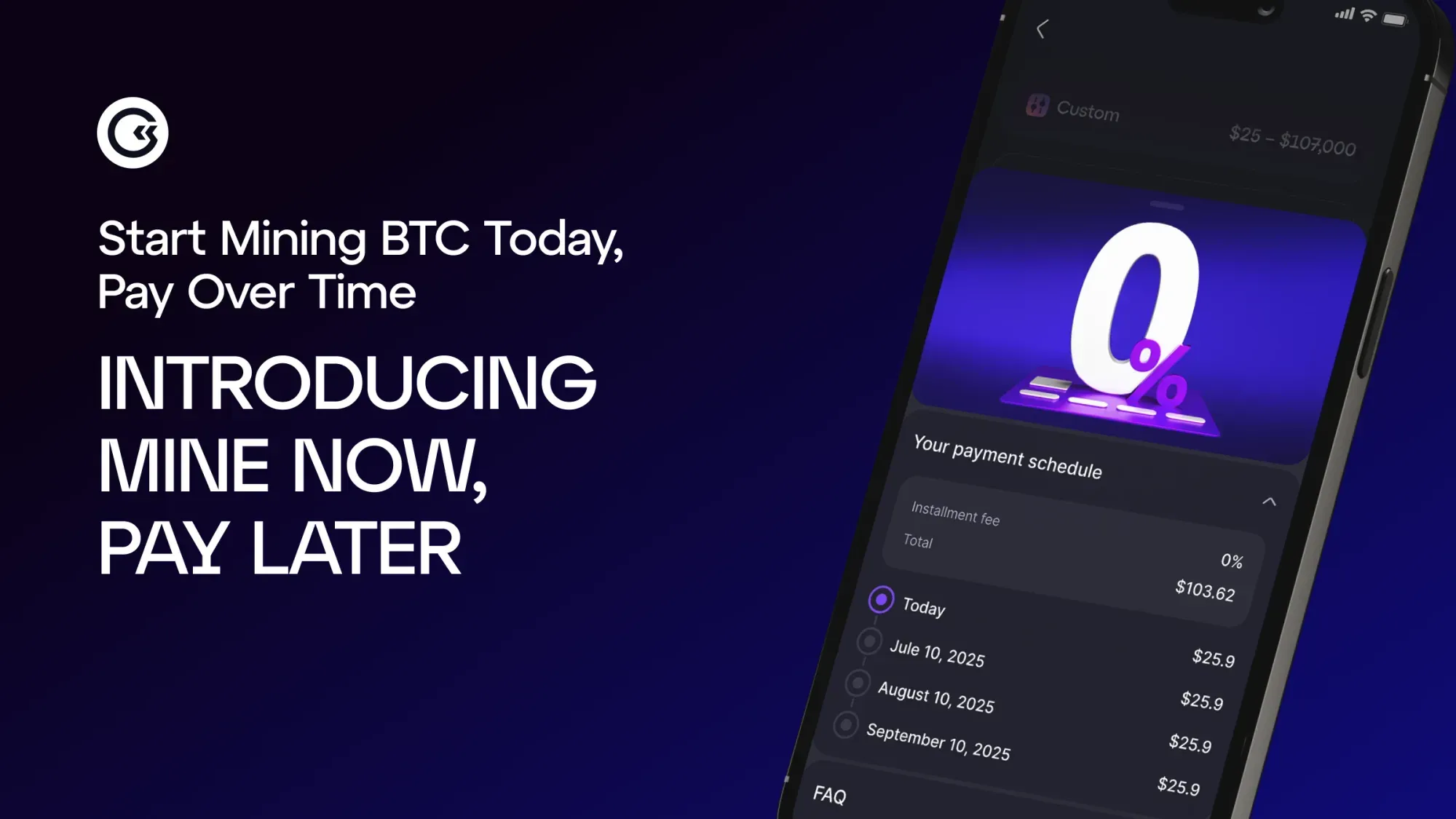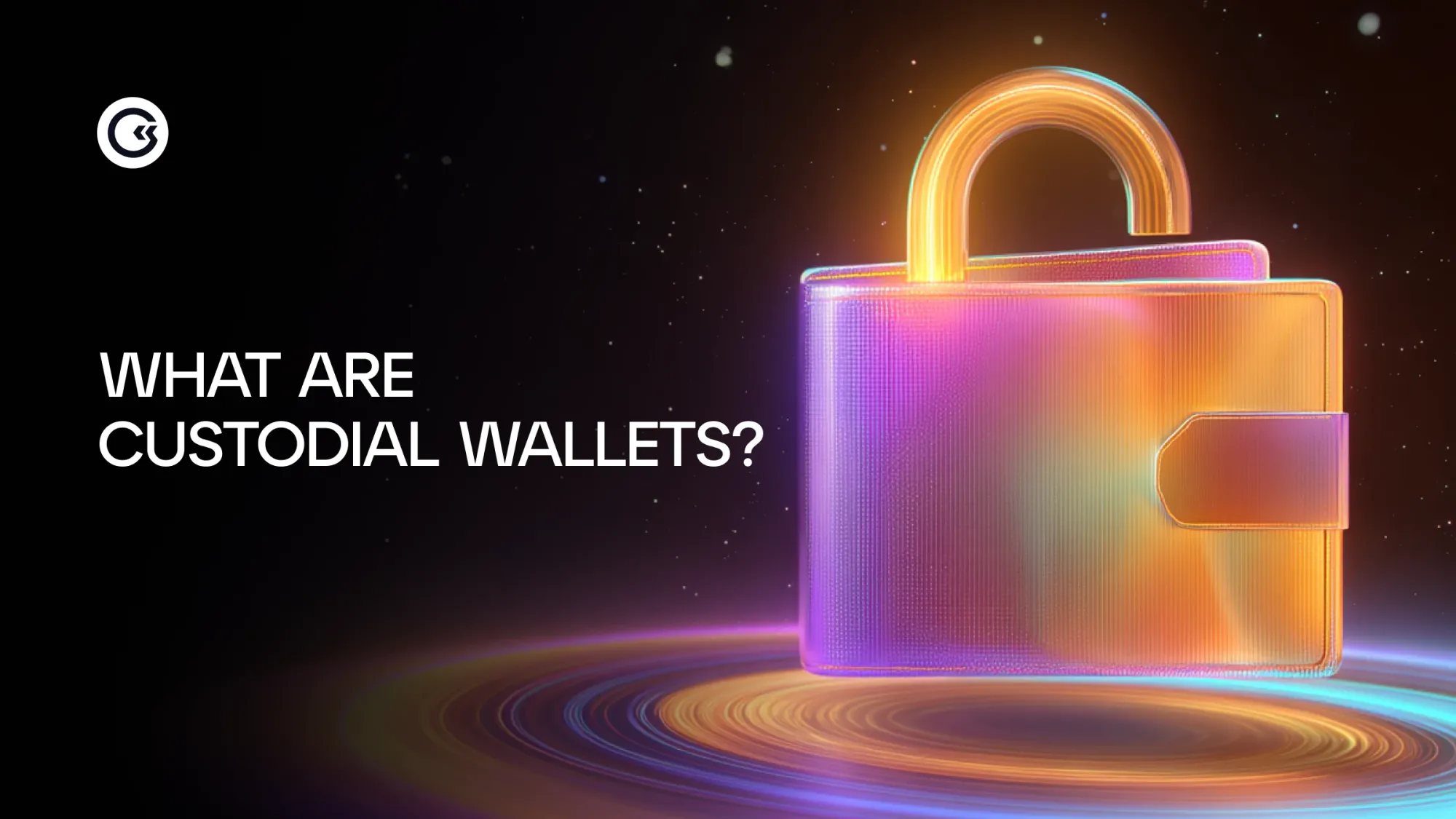암호화폐는 전 세계를 휩쓸었지만, 많은 신규 투자자들에게 전문 용어와 다양한 코인들은 완전히 새로운 언어를 배우는 것처럼 느껴질 수 있습니다. 비트코인, 이더리움, 라이트코인, 알트코인, 블록체인, 스마트 계약과 같은 용어들이 난무하여 쉽게 압도당할 수 있습니다. 이 글은 이러한 혼란을 해소하고 가장 중요한 암호화폐들과 그들의 차이점에 대한 명확하고 친근한 소개를 제공하기 위해 작성되었습니다.
먼저, 전체 암호화폐 혁명을 촉발시킨 최초의 암호화폐인 비트코인에 대해 자세히 알아보겠습니다. BTC가 독특한 이유와 오늘날에도 여전히 시장에서 강력한 위치를 유지하는 이유를 배우게 됩니다.
다음으로, 스마트 계약이라는 획기적인 기술을 도입한 암호화폐인 ETH에 대해 탐구하겠습니다. 이 기술은 단순한 거래를 넘어서는 광범위한 애플리케이션을 가능하게 합니다. 이 섹션에서는 ETH가 블록체인의 가능성을 어떻게 확장하는지 이해할 수 있습니다.
이더리움 다음에는 비트코인의 더 가볍고 빠른 대안으로 알려진 라이트코인에 스포트라이트를 비추겠습니다. 라이트코인이 무엇을 특별하게 만드는지, 왜 일부 사람들이 일상적인 거래에서 이를 선호하는지 다루겠습니다.
이러한 소개 후에, 기사에서는 비트코인, 이더리움, 라이트코인을 직접 비교합니다. 합의 메커니즘, 거래 속도, 수수료, 확장성, 보안을 포함하여 이들이 어떻게 작동하는지 자세히 분석하겠습니다. 이러한 나란히 비교를 통해 각 코인의 강점과 약점을 파악하기 쉬워집니다.
또한 시장의 다른 인기 있는 암호화폐들에 대해서도 간단히 살펴보며, 빅3를 넘어선 암호화폐 환경에 대한 이해를 넓히겠습니다.
마지막으로, 변동성, 시가총액, 채택률, 개인적 목표와 같은 중요한 요소들을 바탕으로 보유하기에 가장 좋은 암호화폐를 선택할 때 무엇을 고려해야 하는지에 대한 아이디어를 얻을 수 있습니다. 장기에 집중할지 단기 기회를 추구할지 등 이러한 통화들에 어떻게 접근할지에 대한 통찰을 제공합니다.
이 명확한 경로를 따라가며, 이 글은 여러분의 자신감과 지식을 구축하여 여러분의 필요에 맞는 암호화폐에 대해 더 현명하고 정보에 기반한 결정을 내릴 수 있도록 돕는 것을 목표로 합니다.
비트코인이란?

비트코인은 2009년 사토시 나카모토라는 이름을 사용하는 누군가(또는 그룹)에 의해 시작된 최초의 암호화폐입니다. 은행이나 정부에 의존하지 않는 디지털 화폐로 만들어졌습니다. 대신, BTC는 분산형 시스템에서 작동합니다 - 즉, 단일 개인이나 회사가 이를 통제하지 않습니다. BTC의 중심에는 블록체인이 있는데, 이는 변경되거나 위조될 수 없는 방식으로 모든 비트코인 거래를 추적하는 안전한 디지털 장부와 같습니다.
비트코인의 주요 특징과 독특한 측면
분산화: 비트코인은 전 세계 컴퓨터 네트워크(노드라고 함)를 통해 작동합니다. 이러한 노드들은 협력하여 모든 거래를 검증하고 기록합니다. 이 때문에 누구도 BTC를 검열하거나 통제할 수 없습니다—완전히 개방적이고 분산되어 있습니다.
제한된 공급: 존재할 비트코인은 2,100만 개뿐입니다. 이 제한된 공급으로 인해 BTC는 시간이 지나면서 가치를 보유할 수 있는 디지털 금과 같습니다.
보안: BTC는 거래를 확인하기 위해 작업 증명(PoW)이라는 시스템을 사용합니다. 이 시스템은 매우 안전하지만 네트워크를 안전하게 유지하기 위해 많은 전력도 사용합니다.
거래 속도와 비용: 비트코인의 거래 속도는 일부 새로운 암호화폐들과 비교하여 느리지만, 강력한 보안과 광범위한 수용으로 인해 암호화폐 시장의 최전선에 머물러 있습니다.
비트코인은 다른 모든 암호화폐의 기초를 설정했으며 비트코인 대 이더리움, 비트코인 대 라이트코인과 같은 논의에서 주요 비교 지점이 되고 있습니다.
이더리움이란?
ETH는 암호화폐를 단순한 디지털 화폐 이상으로 만들고 싶었던 비탈릭 부테린과 개발자 팀에 의해 2015년에 시작되었습니다. 주로 디지털 화폐로 만들어진 BTC와 달리, 이더리움은 스마트 계약이라는 것을 사용하여 블록체인에서 실행되는 분산형 애플리케이션(dApp이라고 함)을 구축하기 위해 설계된 플랫폼입니다.
이더리움과 비트코인의 차이점
스마트 계약: 이더리움의 스마트 계약을 통해 개발자들은 스마트 계약을 만들 수 있습니다 - 이는 규칙이 코드에 작성된 자동 실행 계약입니다. 한 번 설정되면, 중개자가 필요 없이 계약이 자동으로 실행됩니다. 이를 통해 이더리움은 분산형 금융(DeFi) 플랫폼부터 NFT로 알려진 독특한 디지털 수집품에 이르기까지 광범위한 애플리케이션을 구동할 수 있습니다.
ETH: BTC를 사용하는 대신, 이더리움의 네이티브 암호화폐는 이더(ETH)라고 불립니다. 이더리움 네트워크에서 거래 수수료를 지불하고 애플리케이션을 실행하는 데 이더를 사용합니다.
이더리움의 네트워크 업그레이드: 이더리움은 BTC가 사용하는 것과 같은 작업 증명(PoW) 시스템에서 더 효율적인 지분 증명(PoS) 시스템(종종 Ethereum 2.0이라고 불림)으로 전환하고 있습니다. 이 업그레이드는 네트워크를 더 빠르고, 더 확장 가능하며, 에너지 소비를 훨씬 적게 만드는 것을 목표로 합니다.
이더리움의 주요 특징
- 플랫폼에 구축된 다양한 분산형 앱과 토큰을 지원
- 단순히 돈을 보내는 것을 넘어서는 복잡한 거래와 프로그램을 가능하게 함
- 이더리움 가스 수수료로 알려진 거래 수수료가 있으며, 보통 비트코인 수수료보다 빠르고 저렴하지만 네트워크가 바쁠 때 오를 수 있음
- 속도, 효율성, 용량 개선을 위해 설계된 지속적인 업그레이드로 계속 발전함
이더리움 대 비트코인 논의에서, ETH는 종종 더 유연하고 강력한 플랫폼으로 여겨지는 반면, BTC는 디지털 금 - 단순한 가치 저장 수단으로 간주됩니다.
라이트코인이란?
라이트코인은 찰리 리에 의해 2011년에 BTC의 "더 가벼운" 버전으로 만들어졌습니다. 비트코인의 많은 특징을 공유하지만 더 빠르고 저렴하게 설계되어 소액 결제 전송과 같은 일상적인 사용에 더 실용적입니다.
개요와 목적
라이트코인을 비트코인의 "금"에 대한 "은"으로 생각해보세요. BTC가 종종 가치 저장 수단으로 여겨지는 반면, 라이트코인은 사람들이 일상적인 거래에 사용할 수 있는 편리한 디지털 화폐가 되는 데 집중합니다. 비트코인의 일부 기술적 설정을 조정함으로써, 라이트코인은 거래를 더 빠르고 더 저렴한 비용으로 처리하는 것을 목표로 합니다.
주요 특징과 비트코인과의 차이점
더 빠른 거래 속도: 라이트코인의 거래 속도는 BTC보다 현저히 빠르며, 사용자들이 낮은 수수료로 빠르게 결제를 보낼 수 있어 일상적인 사용에 이상적입니다. 라이트코인은 2.5분마다 새로운 블록을 생성하며, 이는 비트코인의 10분마다 한 블록과 비교됩니다. 이는 라이트코인이 초당 더 많은 거래를 처리할 수 있어 대기 시간을 줄이는 데 도움이 됩니다.
더 낮은 거래 수수료: 더 빠른 처리와 설계로 인해, 라이트코인의 거래 수수료는 보통 훨씬 낮습니다. 이는 높은 비용 없이 소액의 돈을 보내는 데 좋은 선택이 됩니다.
채굴 알고리즘: 라이트코인은 작업 증명 시스템에서 스크립트라고 불리는 다른 채굴 방법을 사용합니다. 이 알고리즘은 비트코인의 SHA-256보다 적은 컴퓨팅 파워를 요구하여 더 많은 사람들이 채굴에 접근하기 쉽게 만듭니다.
진행 중인 라이트코인 대 비트코인 논의에서, 라이트코인은 종종 속도와 경제성으로 칭찬받으며 빠른 결제에 뛰어납니다. 하지만 BTC와 같은 장기 가치 저장 수단으로서의 동일한 명성은 갖고 있지 않습니다.
비트코인, 이더리움, 라이트코인 비교

비트코인, 이더리움, 라이트코인의 기본을 배웠으니, 이제 몇 가지 핵심 영역에서 이들이 어떻게 비교되는지 살펴볼 시간입니다. 이는 각 코인을 독특하게 만드는 강점, 약점, 그리고 특징들을 이해하는 데 도움이 될 것입니다.
합의 메커니즘
BTC와 LTC 모두 거래를 확인하고 네트워크를 보호하기 위해 작업 증명(PoW)이라고 불리는 시스템을 사용합니다. PoW에서는 채굴자로 알려진 강력한 컴퓨터들이 복잡한 수학 퍼즐을 풀기 위해 경쟁합니다. 퍼즐을 먼저 푸는 자가 블록체인에 새로운 거래 블록을 추가하고 보상을 받을 권리를 얻습니다. 이 방법은 시스템을 속이기 위해서는 엄청난 컴퓨팅 파워가 필요하기 때문에 매우 안전합니다. 하지만 이는 또한 비트코인과 라이트코인이 많은 에너지를 사용하고 더 느릴 수 있음을 의미합니다.
이더리움은 Ethereum 2.0 업그레이드로 작업 증명에서 지분 증명(PoS)으로의 전환을 통해 상황을 바꾸고 있습니다. 채굴자 대신, 이더리움은 담보로 "스테이크"하거나 잠그는 이더(ETH) 양에 기반하여 새로운 블록을 생성하도록 선택받는 검증자들을 갖게 됩니다. PoS는 훨씬 적은 에너지를 사용하고, 더 빠른 처리를 가능하게 하며, 더 많은 사람들이 사용함에 따라 네트워크의 확장 능력을 개선하도록 설계되었습니다.
속도와 거래 수수료
거래가 얼마나 빨리 일어나고 그 비용이 얼마인지에 관해서는, 이들 코인 간에 눈에 띄는 차이가 있습니다:
비트코인은 초당 약 7개의 거래를 처리할 수 있습니다. 바쁜 시기에는 이것이 더욱 느려질 수 있으며, 사용자들이 거래를 빠르게 포함시키기 위해 경쟁하기 때문에 수수료가 종종 상승합니다.
라이트코인은 BTC의 10분에 비해 2.5분이라는 더 짧은 블록 시간 덕분에 BTC보다 대략 4배 빠릅니다. 이는 거래가 더 빨리 확인되고 수수료가 훨씬 낮아지는 경향이 있음을 의미하여, 라이트코인을 일상적인 결제에 더 실용적으로 만듭니다.
이더리움은 가스 수수료와 거래 속도 개선을 도입한 런던 하드포크와 같은 업그레이드 후 특히 BTC보다 빠르게 거래를 처리합니다. 하지만 가스 수수료라고 불리는 이더리움의 수수료는 네트워크 혼잡에 따라 크게 변동할 수 있습니다. 많은 사람들이 한 번에 이더리움을 사용하면 가스 수수료가 급증할 수 있지만, 진행 중인 업그레이드들은 이 문제를 줄이는 것을 목표로 합니다.
확장성
확장성은 암호화폐 네트워크가 얼마나 잘 성장하고 시간이 지남에 따라 더 많은 거래를 처리할 수 있는지를 의미합니다.
비트코인은 블록 크기(각 블록이 보유할 수 있는 데이터 양)와 블록 시간이 처리할 수 있는 거래 수를 제한하기 때문에 확장성 문제가 있습니다. 이는 더 많은 사람들이 BTC를 사용하려고 할 때 혼잡해져서 거래가 느려지고 수수료가 증가할 수 있음을 의미합니다.
이더리움은 확장성 솔루션에 적극적으로 노력하고 있습니다. 여기에는 블록체인을 더 작은 조각들로 나누어 거래를 병렬로 처리하는 샤딩과, 메인 블록체인 밖에서 많은 거래를 처리하여 혼잡을 줄이는 레이어 2 솔루션이 포함됩니다.
라이트코인은 비슷한 블록체인 설계에 기반하기 때문에 BTC와 비슷한 확장성 제한을 공유합니다. 하지만 더 빠른 블록과 낮은 수수료로 인해 정상적인 조건에서 심각한 혼잡을 경험할 가능성이 낮습니다.
보안과 분산화
보안과 분산화는 암호화폐에 대한 신뢰에 있어 중요합니다:
비트코인은 가장 안전하고 분산된 블록체인으로 널리 인정받고 있습니다. 전 세계 채굴자와 노드들의 거대한 네트워크로 인해 어떤 단일 그룹이 네트워크를 통제하거나 공격하는 것이 극도로 어렵습니다.
이더리움 또한 매우 분산되어 있지만, 지분 증명으로의 전환은 검증자들이 어떻게 선택되고 보상받는지를 바꿉니다. PoS는 참여에 새로운 역학을 도입하지만, 이더리움은 여전히 전 세계적으로 견고한 노드 네트워크를 유지하고 있습니다.
라이트코인은 견고한 보안을 유지하지만 BTC에 비해 더 적은 채굴자를 갖고 있습니다. 이 작은 채굴 커뮤니티는 라이트코인이 다소 덜 분산되어 있음을 의미하며, 이는 극단적인 시나리오에서 그 회복력에 영향을 줄 수 있습니다. 그래도 일상적인 사용을 위한 신뢰할 수 있고 안전한 암호화폐로 남아있습니다.
기타 인기 있는 암호화폐

비트코인, 이더리움, 라이트코인이 종종 주목받는 반면, 암호화폐 시장은 믿을 수 없을 만큼 다양하며, 각각 다른 목적을 제공하고 독특한 문제를 해결하도록 설계된 수천 개의 알트코인(대체 코인)이 있습니다.
잘 알려진 알트코인들로는 XRP, 카르다노, 폴카닷 등이 있습니다. 이러한 암호화폐들은 각각 특정 틈새를 타겟으로 하거나 BTC와 ETH의 측면을 개선하여 새로운 것을 테이블에 가져옵니다.
XRP는 국경 간 결제를 더 빠르고 저렴하게 만드는 데 집중하고 있습니다. 거래 확인에 때로는 몇 분 이상이 걸릴 수 있는 BTC와 달리, XRP의 네트워크는 단 몇 초 만에 결제를 처리하여 국제 송금 개선을 목표로 하는 은행과 금융 기관들 사이에서 인기가 있습니다.
**카르다노(ADA)**는 이더리움과 같은 스마트 계약 플랫폼으로 자리매김하지만 학술 연구와 피어 리뷰 개발에 강한 중점을 둡니다. 복잡한 분산형 애플리케이션(dApp)들이 원활하게 실행될 수 있도록 하면서 고도로 안전하고 확장 가능한 블록체인을 제공하는 것을 목표로 합니다.
폴카닷은 블록체인 상호 운용성의 아이디어를 도입합니다 - 즉, 여러 블록체인을 하나의 통합된 네트워크로 연결하여 정보를 원활하게 소통하고 공유할 수 있게 합니다. 이 접근법은 오늘날 많은 블록체인이 직면한 고립을 극복하는 것을 목표로 합니다.
또한 모네로와 지캐시와 같이 프라이버시를 위해 설계된 많은 코인들이 있으며, 거래를 익명이고 추적 불가능하게 만드는 데 집중합니다. 체인링크와 같은 다른 코인들은 실세계 데이터를 스마트 계약에 연결하는 작업을 하여 블록체인 기술의 사용 사례를 확장합니다.
비트코인 대 알트코인은 매우 광대한 시장이며 빠르게 진화하고 있습니다. 일부 알트코인들이 흥미진진한 혁신을 도입하거나 전문화된 요구를 충족하는 반면, BTC는 시가총액, 인지도, 채택 면에서 논란의 여지가 없는 리더로 남아있습니다. 많은 보유자들과 사용자들은 여전히 BTC를 주요한 가치 저장 수단이자 암호화폐 세계로의 관문으로 봅니다.
이러한 광범위한 암호화폐의 다양성을 이해하는 것은 더 넓은 암호화폐 생태계를 이해하는 데 도움이 됩니다 - 다양한 코인들이 다양한 목적을 제공하고 혁신이 지속적인 디지털 코인의 전체 우주와 같습니다. 각각은 거래, 프라이버시, 속도 또는 프로그래밍 가능성에 대한 독특한 이익을 제공하도록 설계되었습니다.
어떤 암호화폐를 보유하는 것이 최선일까?

보유하기에 가장 좋은 암호화폐를 결정하는 것은 만능 해답이 없습니다. 그것은 정말로 당신의 개인적인 목표, 얼마나 많은 위험을 감수할 의사가 있는지, 그리고 장기 보유를 원하는지 더 빠른 이익을 찾는지에 대한 당신의 타임라인에 달려 있습니다.
고려해야 할 중요한 요소들
변동성: 암호화폐는 극적인 가격 변동으로 유명합니다. BTC가 많은 소규모 알트코인들에 비해 더 안정적으로 여겨지는 경우가 많지만, 여전히 상당한 오르내림을 경험할 수 있습니다. 더 적은 변동성을 선호한다면, BTC가 새롭거나 덜 확립된 코인들에 비해 더 안전한 선택일 수 있습니다.
시가총액: 시가총액은 유통 중인 모든 코인의 총 가치입니다. BTC는 압도적으로 가장 큰 시가총액을 갖고 있으며, 이는 더 널리 채택되고 가치 저장 수단으로서 일반적으로 위험이 적다는 것을 의미합니다. 작은 코인들은 큰 이익을 제공할 수 있지만 급작스러운 하락이나 실패의 더 높은 위험도 수반합니다.
채택률: 이더리움은 빠르게 성장하는 생태계의 혜택을 받고 있습니다. 그 블록체인은 분산형 금융(DeFi)에서 수천 개의 분산형 애플리케이션(dApp)과 프로젝트를 지원하며, 네트워크가 확장됨에 따라 이더에 대한 꾸준한 수요를 이끌고 있습니다. 이는 실세계 사용 사례와 연결된 성장 잠재력을 찾는 보유자들에게 이더리움을 매력적으로 만듭니다.
사용 사례: 라이트코인(LTC)은 주로 일상적인 거래를 위한 더 빠르고 저렴한 BTC 대안으로 설계되었습니다. 그 가치 제안은 성장보다는 돈을 빠르고 저렴하게 지출하거나 이체하는 실용성에 있습니다.
장기 대 단기 전략
장기 보유: BTC는 종종 장기 보유자들에게 가장 적합한 선택으로 여겨집니다. 강한 브랜드 인지도, 제한된 공급(2,100만 BTC만 존재할 예정), 그리고 "디지털 금"으로서의 지위로 인해 가치를 저장하고 수년에 걸쳐 가격 상승으로부터 잠재적으로 이익을 얻고자 하는 사람들에게 매력적입니다.
성장 잠재력: 이더리움은 플랫폼이 업그레이드와 새로운 애플리케이션으로 계속 발전하면서 성장을 위한 흥미진진한 기회를 제공합니다. 하지만 지분 증명(Ethereum 2.0)으로의 완전한 이동과 같은 주요 변화를 여전히 겪고 있고 스마트 계약 공간에서 더 많은 경쟁이 있기 때문에 더 많은 기술적 위험을 수반합니다.
단기 사용: 라이트코인은 더 빠른 거래와 낮은 수수료를 위해 암호화폐를 사용하고자 하는 사람들에게 좋은 선택이 될 수 있습니다. 폭발적인 수익을 제공하지 않을 수 있지만 빠른 결제나 소액 이체를 위한 실용적인 장점을 제공합니다.
포트폴리오 균형 맞추기
비트코인, 이더리움, 라이트코인의 장단점은 다른 암호화폐들이 포트폴리오에서 어떻게 다른 목적을 제공하는지를 강조합니다. 일부 보유자들은 안정성, 성장 잠재력, 사용성의 균형을 맞추기 위해 이러한 코인들의 혼합을 보유하기로 선택합니다. 다른 사람들은 더 높은 이익을 추구하기 위해 몇 개의 알트코인을 포함할 수 있지만, 관련된 위험을 이해하는 것이 필수적입니다.
각 암호화폐의 독특한 특징, 시장 역학, 미래 잠재력에 대해 배우는 시간을 갖는 것은 당신의 재정적 목표와 일치하는 정보에 기반한 결정을 내리는 데 도움이 될 것입니다.
배우면서 비트코인을 얻으세요!

복잡한 채굴 장비 없이 BTC를 벌기 시작하고 싶나요? GoMining 플랫폼을 통해 사용하기 쉬운 채굴 게임에 참여하기만 하면 실제 BTC 보상을 얻을 수 있습니다. 이는 암호화폐를 탐색하고, 지갑을 구축하며, 블록체인 기술에 대한 실무 경험을 얻는 재미있고 진입 장벽이 낮은 방법입니다 — 모든 것을 BTC를 얻으면서 말이죠!
오늘 GoMining을 확인하고 시간을 암호화폐 가치로 바꾸고 있는 수천 명의 사람들과 함께하세요!
결론
이 암호화폐 비교에서, 우리는 다음을 확인했습니다:
- 비트코인은 선구자로서, 비할 데 없는 보안과 디지털 금으로서의 지위를 제공합니다.
- 이더리움은 광범위한 블록체인 애플리케이션을 가능하게 하는 강력한 스마트 계약을 제공합니다.
- 라이트코인은 일상적인 사용에 적합한 더 빠르고 저렴한 거래를 제공합니다.
- 비트코인 대 알트코인 시장은 다양하며, 이 세 가지를 넘어서는 많은 흥미진진한 프로젝트들이 있습니다.
올바른 암호화폐를 선택하는 것은 가치를 저장하고 싶은지, 블록체인 앱에 참여하고 싶은지, 또는 빠른 거래를 하고 싶은지 등 당신의 필요에 따라 달라집니다. 비트코인과 이더리움 비교는 물론 비트코인 대 라이트코인을 이해하는 것은 이 흥미진진한 암호화폐 공간에서 정보에 기반한 결정을 내리는 데 도움이 됩니다.
더 나아가 탐구하고, 계속 배우며, 당신의 목표와 라이프스타일에 가장 적합한 암호화폐를 찾을 준비를 하세요!
이 번역은 AI의 도움으로 완성되었습니다. 원본 기사는 여기에서 읽으실 수 있습니다
August 7, 2025













